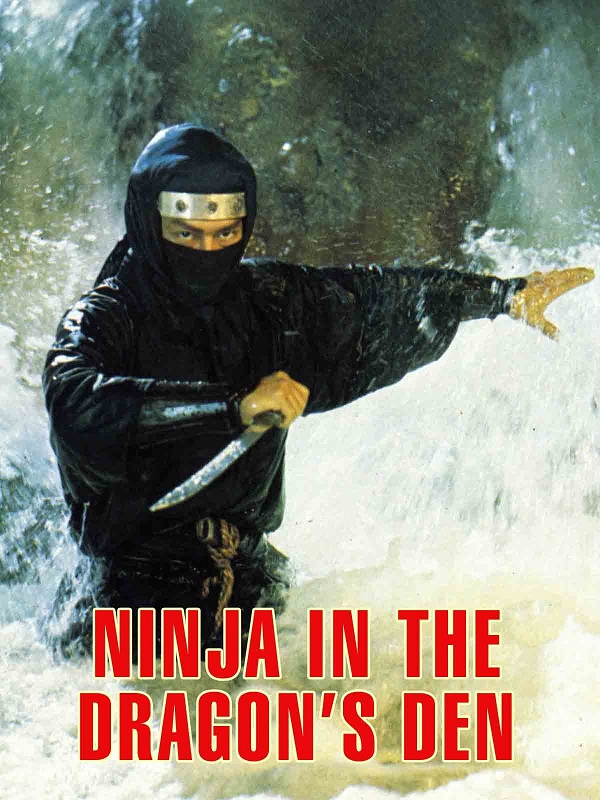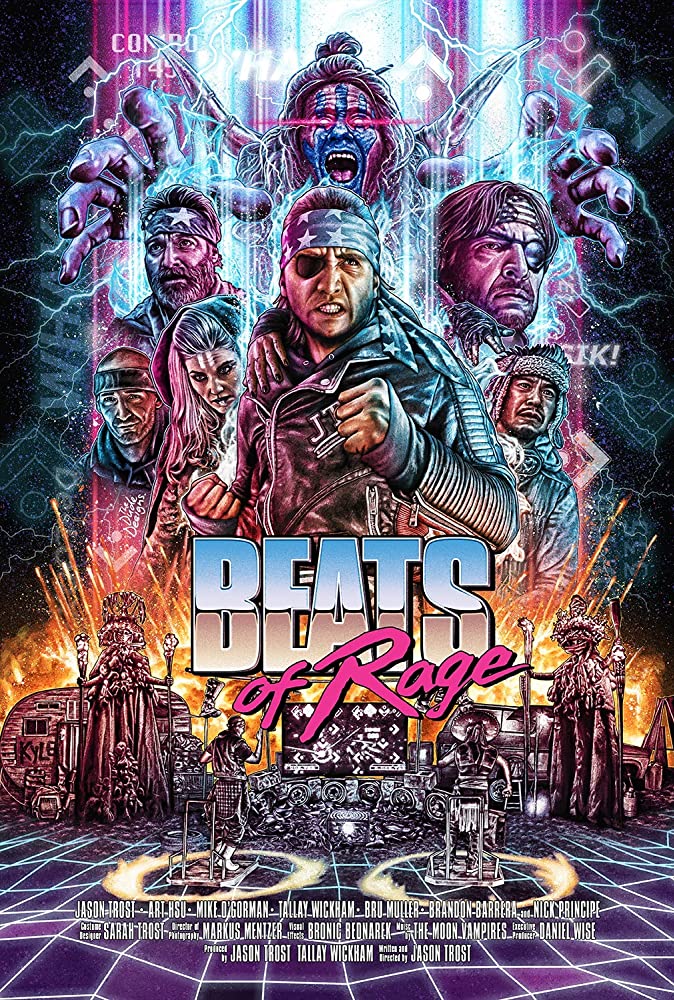Darylsurat
Shared posts
Anime World Order Show # 235 - We Can Think of Numerous Things Griffith Did Wrong, Actually
Apple MacBook Pro (2021): M1 Pro, 14" Liquid Retina XDR, 16GB RAM, 512GB SSD $1599 + Free Shipping

Best Buy has Apple 14" MacBook Pro Laptop (2021 Model) on sale for $1,599. Shipping is free.[LIST][*]Available Colors:[LIST][*]Space Gray (MKGP3LL/A)
Anime World Order Show # 207 - Interview With Jim Kaposztas, Creator of the First AMV
Anime World Order Show # 202 - I'm Sorry, But I'm a Male Chauvinist
Viz Media, Manga Plus Publish Chainsaw Man Author's New 140-Page 1-Shot in English
Back Arrow Never Asks for Too Much
In today’s media landscape, it can feel like everything is about having an obsessive audience. Mobile games incentivize you to try to get every ultra rare and keep following a neverending story. Superhero movies, like their comic counterparts, want you to watch every single sequel and spin-off leading to the next mega film. Manga and anime want you to look into every character’s backstory and all the convoluted history that connects them together. These aren’t necessarily bad things, but they can be exhausting.
Under these circumstances, the anime Back Arrow is like a breath of fresh air because it doesn’t expect your total time and attention. Every episode, I would be entertained and intrigued; I might even have speculated what would happen next. But in a time when my mental space is being bombarded by world-changing events on the regular on top of all the aforementioned fan-forward storytelling, I like having an anime that’s just trying to be a sandwich instead of a 10-course meal.
The premise: Lingalind is a world of constant strife, with countries big and small vying for supremacy. Surrounded by a divine Wall that cannot be crossed, mysterious drop pods called rakuho fall from the sky and provide mysterious armbands known as Bind Warpers. These devices allow people to manifest their convictions and form giant robots called Briheights, and are the primary weapon of war. One day, a group from the tiny village of Edger finds a rather unusual rakuho containing a man with no memory—other than the seemingly insane notion that he comes from beyond the Wall. This man, who comes to take the name Back Arrow, is not only able to manifest a Briheight without having any conviction of his own, but is also able to defeat other Briheights without killing them, which was thought to be impossible.
Back Arrow is like a cross between Gun x Sword, Star Driver, and Code Geass (even sharing the same director in this last case), only a whole lot less subtle. And given what those three series are like, this means watching Back Arrow is like getting hit over the head by two ham fists. The two major world powers are the Republic of Rekka, a hyper-exaggerated Dynastic China with Three Kingdoms elements, and the Supremacy of Lutoh, essentially pre-Revolution France with a seedy underbelly. Back Arrow and the residents of Edger Village all look like poorly dressed cowboys. But somehow, the anime ends up being really entertaining with endearing characters, lots of twists and turns, and some pretty solid action scenes—all without being bogged down or burdened with an excess of unrealistic ambition.
That’s not to say Back Arrow phones it in. The series’ narrative developments aren’t that surprising, but it’s never boring. In many ways, Back Arrow reminds me of really good pro wrestling. It’s ridiculous if you step back, but it’s easy to suspend disbelief thanks to the charisma of its presentation. Moreover, predictability isn’t a four-letter word, and in fact can be the foundation of some of the best stories because they have satisfying payoffs.
SHAKA NINJA!
Hang on to your secret assassination tools, because Ninja in the Dragon’s Den is the Greatest Movie EVER!
Click on the DVD cover or the title above to download our review of the film, featuring Daryl Surat of AnimeWorldOrder.
Review in a Nutshell: The feature film directorial debut of Corey Yuen, NInja of the Dragon’s Den showcases some incredible athleticism in its stunt choreography and a surprisingly compelling plot. Shaka ninja!
Anime World Order Show # 200 - Let's ACTUALLY Interview Helen McCarthy Already
Anime World Order Show # 199 - Come Together, Just Become The Joker
Anime World Order Show # 198 - We Can't See That He Is a Pioneer, Unlocking the Greatest Mysteries
Anime World Order Show # 197 – You Grew All That Human Tissue in Orbit and It Doesn't Even Work
The Mandalorian Season 2 Doesn’t Contradict The Last Jedi
WARNING: SPOILERS for Season 2 of The Mandalorian.
The Mandalorian has managed to bring Star Wars fans together in ways I never expected. No matter which movie or trilogy is your favorite (or least favorite), or even if Star Wars has never been your cup of tea, The Mandalorian feels faithful to the heart and spirit of the franchise without being too overly bogged and down and reverential to the films. But I’ve seen a strange reaction online, mostly from people irrationally angry at Episode VIII: The Last Jedi, who attempt to use The Mandalorian to draw lines in the sand where there are none. Their goal: to push a narrative that, somehow, The Mandalorian helped fix the “wokeness” that “ruined” The Last Jedi.
The climax of Season 2 of The Mandalorian has the protagonist and his allies trapped in a situation from which there appears to be no escape from a small army of murderous droids, when suddenly a lone X-Wing docks into the Star Destroyer they’ve stormed. Out pops a mysterious hooded figure wielding a green lightsaber, who single handedly wipes out every robot soldier with awe-inspiring ease. When he reaches the Mandalorian, he reveals his face, and it’s the original hero of Star Wars, Luke Skywalker, post-Return of the Jedi and more powerful than we’ve ever seen him in combat.
After this episode, Star Wars fans came out with cries of joy, but among the praises were voices that tried to twist this into some kind of admonishment of The Last Jedi’s director, Rian Johnson. According to this narrative, The Mandalorian succeeded in its portrayal of Luke where The Last Jedi failed, the latter acting more as character assassination than character development. “This is how Luke should have always been.”
The Last Jedi is my favorite of the sequel trilogy, especially because I see Episode VII: The Force Awakens as decent but overly safe and Episode IX: The Rise of Skywalker as the product of abject cowardice. I also do think the stance that The Last Jedi betrayed the franchise is often disingenuous, and partly a way to push a strange right-wing agenda that is bitter at the generally liberal-leaning environment of Hollywood and entertainment media. Even so, I want to address it for one reason: It incorrectly assumes that, for whatever reason, those who enjoyed The Last Jedi would be somehow upset at Luke Skywalker being a badass.
The Last Jedi’s portrayal of Luke as a man scared to repeat his greatest mistake—training someone in the ways of the Jedi who then becomes corrupted—is indeed a stark contrast from the never-give-up attitude of his younger self, and so it’s easy to see why that older Luke can be so jarring. However, I think what Episode VIII smartly does is set up parallels between the reality of the the viewers and the story of that galaxy far, far away: the better days promised to us in decades past have not panned out, and the older generation who were supposed to lead us to prosperity and understanding could not reach that lofty goal because they were ultimately limited by the circumstances of both the world at large and their way of thinking. The idea is that Luke Skywalker is powerful, but he couldn’t do everything, and he had a breaking point.
This personal flaw in no way conflicts with his portrayal in The Mandalorian unless belief in Luke Skywalker requires him to be beyond reproach. He can still be the guy who cut through a squad of Dark Troopers and also the guy who felt such immense guilt that he banished himself to the farthest reaches of space. It reminds me of the anger people feel over criticisms of the US’s founding fathers as marred by their own racism, and it comes from what I think is the way we place our heroes, both fictional and real, onto pedestals that somehow require them to be as perfect as possible. I think it’s no coincidence that similar anger exists over actual Confederate monuments (statues that were cheaply mass-produced to take advantage of ingrained racist beliefs decades after the Civil War), or how treating Donald Trump like a messiah requires an ever increasing—and now deadly—amount of suspension of disbelief.
The Mandalorian itself encourages the idea that one’s deep-seated beliefs may not always align with the truth. When the Mandalorian himself meets others of his kind, he finds out that the sacred vow he took is not one universal to those of Mandalore, but the product of a particular extremist sect. In this respect, while Luke Skywalker does get his moment at the season finale, the greater show also discourages unwavering loyalty purely based on tradition and dogma. Ultimately, the argument that his appearance as symbolic of a push against Rian Johnson is little more than posturing, and is yet another attempt to create outrage at perceived enemies of an archaic and dangerous form of traditionalism.
Anime World Order Show # 194 - A Kentucky Meat Shower of Trivia
Anime World Order Show # 192 - My Gundam Is a Bird; Your Argument is Invalid
Anime World Order Show # 191 – As Fast Karate Said 15 Years Ago…YOU CAN’T DO THAT
Yen Press to Release New Japan Pro-Wrestling Manga Digitally
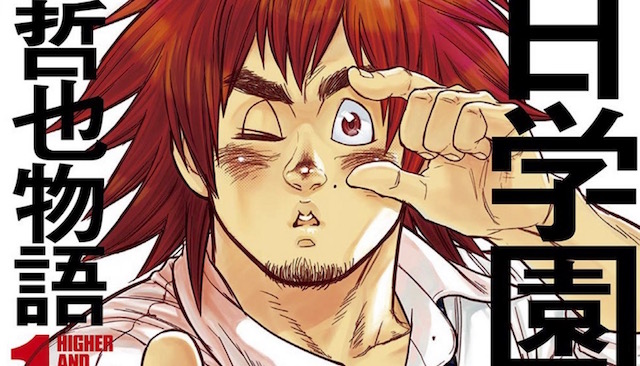
North American publisher Yen Press is stepping into the ring of New Japan Pro-Wrestling with the license of HIROKU's New Japan Academy manga. The series is coming out in English digitally, with the first volume set to arrive this October.
This particular manga is told from the perspective of pro wrestler Tetsuya Naito, and features consultation by New Japan Pro-Wrestling. Check out the full Japanese cover and synopsis:
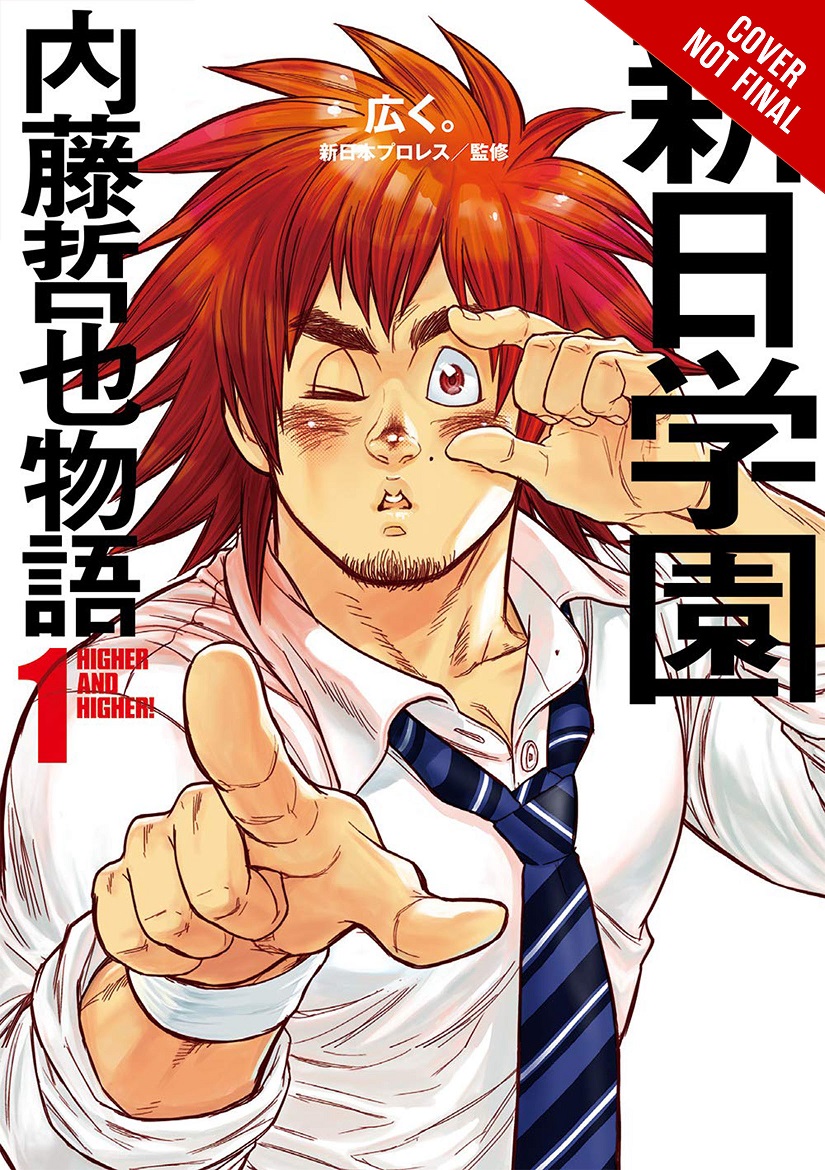
Description:
It’s the stars of New Japan Pro-Wrestling as you’ve never seen them before! Teenager Tetsuya Naito is aiming for the top of New Japan Academy, but in order to be the champion, he’ll have to face formidable students like “Rainmaker” Kazuchika Okada and the “Once-in-a-Century Talent” Hiroshi Tanahashi. Luckily for Naito, he has his boys in Los Ingobernables de Japon on his side! No matter the odds, Naito’s motto remains the same: tranquilo (quiet).
With the rise in worldwide popularity of New Japan Pro-Wrestling, the manga New Japan Academy is a highly anticipated release by the many passionate fans of the pro-wrestling promotion and the stars within it.
A story told from the point of view of Tetsuya Naito, one of the most popular pro-wrestlers in the world due to his tenure at both New Japan Pro-Wrestling and Consejo Mundial de Lucha Libre (CMLL), New Japan Academy shows fan-favorite wrestlers like they’ve never been seen before!
-------
Joseph Luster is the Games and Web editor at Otaku USA Magazine. You can read his webcomic, BIG DUMB FIGHTING IDIOTS at subhumanzoids. Follow him on Twitter @Moldilox.
Anime World Order Show # 190 – We’ve Found New and Innovative Ways to Be Bad
Mecha Anime GEAR Fighter Dendoh Launches 20th Anniversary Celebrations

20 years ago, Sunrise premiered GEAR Fighter Dendoh: a mecha anime in which two grade-school pilots took on an alien threat in their awesome battery-powered robot. Now, fans can relive the excitement thanks to a 20th anniversary initiative from Sunrise.
Sunrise will be kicking off the program by running the first episode of the series on their official YouTube channel for a limited time. The episode will be viewable from July 20 to August 19, 2020. Region availability has not yet been confirmed.
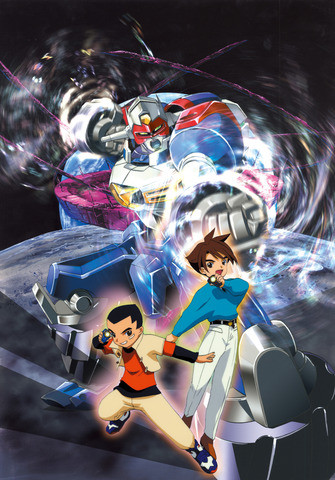
Yatate Bunko, Sunrise's light novel imprint, will also be taking part. The imprint, which has published web novelizations and continuations of properties like Mashin Hero Wataru and GaoGaiGar, is teasing new GEAR Fighter Dendoh content from the show's original staff. To kick off, they'll be running an interview with chief director Mitsuo Fukuda and producer Naotake Furusato.

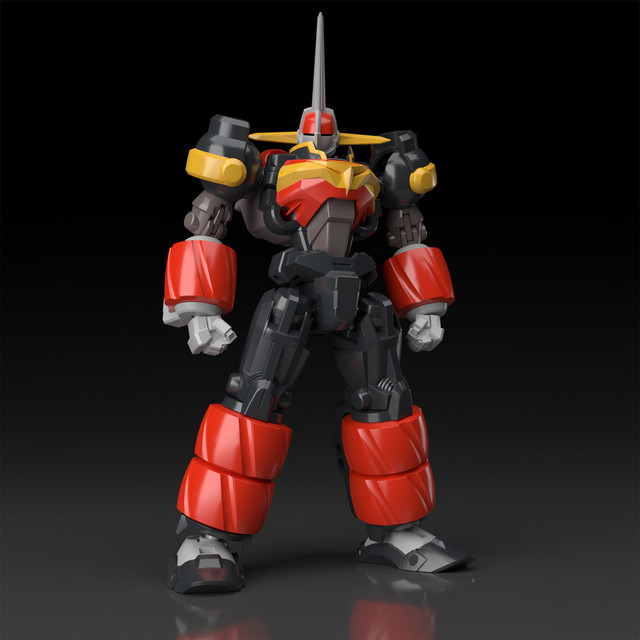
Of course, it wouldn't be a Sunrise mecha show without merch! The show's two main units, GEAR Fighter Dendoh and Knight Gear Oger, will be getting the Super Mini PLA treatment Bandai.
And finally—at least for now—players of mobile game Super Robot Wars X-Ω can look forward to Dendoh and Oger appearing in-game this year. This will mark the first time the series has been a part of the franchise since 2005, when a Dendoh storyline appeared in Super Robot Wars MX.
More details will be announced over time on the anime's official website.
>> GEAR Fighter Dendoh Website
Source: Anime! Anime!

Comment on Anime World Order Show # 189 – Yeah, I Got My Balls Blown Off By a Land Mine But My Soul Will Always Be With You by Carl
I can think of 11 different English-language print manga magazines that have existed, and I may be missing some. The company that published the most, unsurprisingly, has been Viz (Shonen Jump, Shojo Beat, PULP, Animerica Extra, and Manga Vizion); Shonen Jump was by far the most successful, lasting for ten years as a print magazine, before transitioning to its successful digital format. A major reason that such efforts have been made to attempt a successful manga magazine in foreign markets is, of course, the simple awareness that such magazines have long been the dominant publishing model for manga in Japan. The gradual decline in manga magazine circulations since the 1990s may mean that this model will be replaced (as the magazines themselves once came to replace the rental-manga market where the 1940s and 50s generation began their careers), but even so, the great majority of manga that get licensed in English still came from such an anthology magazine.
These magazines are the wellspring of professional manga culture in Japan; however, (again, with the arguable exception of Shonen Jump), English-speaking fans don’t get to see the original context of their manga. The fact those manga originally appeared in a magazine and not a graphic novel isn’t incidental; that translated manga you read came to exist as a professional work because a magazine editor in Japan thought it would be a good fit for a certain Japanese magazine, running alongside certain other manga at the same time in the same magazine—the work, while having its own individual identity, needed to exist and develop within a collective context to go pro. The comparison is obviously inexact, but the way people experience manga here is as if you only knew US comics from reading them as graphic novel collections, and were not familiar with the monthly comic books where these stories were often first published.
AWO quoted the tagline “PULP from Viz Comics…” and as I am forever pointing out, Viz’s original name was Viz Comics, as, like the rest of the English-language manga industry, it originated and first developed as a niche within the US comics industry, and originally used that industry’s practice of publishing monthly comic books followed by graphic novel collections—even Tokyopop, which pushed manga into the straight-to-GN format it uses today, itself began by publishing manga in comic book format (as well as in its own manga magazines, MizzZine and Smile). Having said that, Viz was of course a Japanese company, and it was well aware that manga culture in Japan was grown and cultivated not in single-story comic books (or graphic novels), but within the framework of anthology magazines. The next step in developing manga in the English market therefore would be not just releasing the original content, but the original format as well—that is, try to make a successful manga anthology magazine in English.
This move was also born out of ever-increasing confidence in the format itself; recall that the mid-90s were the high tide of manga magazine sales in Japan. Most famously, Shonen Jump was selling 6.5 million copies a week in 1996, but many others sold over a million copies per issue, including Big Comic Spirits (the home of PULP’s Dance Till Tomorrow, Uzumaki, Benkei in New York, Even a Monkey Can Draw Manga, and Tekkonkinkreet [originally released under the name Black & White]), whose sales that year in Japan averaged nearly 1.5 million weekly (I noted that was the same figure Daryl cited from the press release at 02:06:46). All this growth was based on story readership, and arguably it could be directly contrasted to what was happening with comic books in the US during the same time—the mid-90s contraction of the market linked to the collapse of the speculator boom—a bizarre and alien notion to the manga industry in Japan, where those millions of magazines were not bagged, boarded, or slabbed, but recycled or left on the train after reading.
The first appearance of PULP was the promotional ashcan Daryl mentions at 02:09 (in the hip lingo of comics, an ashcan is a limited preview or teaser of an upcoming work in comic book format—it might contain only excerpts of the story, or only the b/w version of the pages before they’re colored) that was given away at the 1997 San Diego Comic-Con. This was followed at the end of the year by the first actual full-size issue, Vol. 1, No. 1 (December 1997—the first volume of PULP consisted only of that single December issue), after which PULP began its regular monthly run with Vol. 2, No. 1 (January 1998) that concluded with the final issue, Vol. 6, No. 8 (August 2002).
Not counting the ashcan, there were a total of 57 monthly issues of PULP, so the magazine lasted almost five years. I believe I first started getting involved with PULP (and Banana Fish) with the August 1999 issue (Vol. 3, No., 8), so I was a part of it for most of the magazine’s run. To be fair, there have certainly been plenty of manga magazines in Japan, even from major publishers, that didn’t last five years. I don’t regard the failures of manga magazines in English as a form of hubris, as I agree with the premise that they represent an authentic manga culture that was worth attempting to emulate; ultimately, I would say an anthology magazine full of serialized manga titles, even if those manga are “flopped” (as those in PULP were) is perhaps more “authentic” to the way manga are released in Japan than is a straight-to-GN release that reads right-to-left.
That’s one of the reasons I’m very glad that Shonen Jump has become well known here, as it’s perhaps the only true example of a Japanese manga magazine successfully exporting the collective culture of its titles to foreign markets, an achievement which of course reflects almost 20 years of constant hard work on the part of Viz and its associated staff and freelancers. If any manga magazine was going to achieve this, it might be expected that it would be Shonen Jump, as it is also the most popular manga magazine in Japan.
In the early 2010s, Viz made another effort to develop an online/print identity based on a manga magazine in Japan, this time from the other end of the scale—the SigIKKI line. Whereas Shueisha’s Shonen Jump is a weekly, Japan’s best-selling manga magazine (and today its only remaining manga magazine with a million-plus circulation) Shogakukan’s former IKKI magazine, at the time of SigIKKI’s launch, was a monthly selling fewer than 12000 copies per issue in Japan—lots of monthly American comics sell more than that.
This didn’t mean IKKI lacked some respect in the industry; like Kadokawa’s Comic BEAM (a magazine to which it was compared in Japan), it was a platform for more offbeat or interesting manga that might not necessarily have a place everywhere. Former Viz VP (and now Square Enix’s publishing director at Penguin Random House) Leyla Aker once joked that SigIKKI was sometimes referred to in-house as PULP 2.0, and indeed IKKI had unusually close links to the original PULP. Although IKKI began its regular monthly run in Japan in 2003, the year after PULP ended, IKKI already existed as an occasionally published spinoff magazine that began in late 2000 (testing the waters with occasional issues is a not uncommon way in Japan to begin a manga magazine that may later go regular), and indeed PULP published a preview of a Taiyo Matsumoto work that had appeared in those occasional IKKI issues, No. 5. We even heard at the time that IKKI considered taking up the PULP name for themselves once they went monthly, but in the end they decided to stick with IKKI.
Even though I think it was and is worth doing, there are several major challenges in trying to make the manga anthology magazine format work in the English-language market. One is surely economics. If the average American comic book cost a quarter today instead of $3.99, I bet a lot more Americans would read comics. That’s basically the economics of manga magazine readership in Japan; Kodansha’s Afternoon magazine, for example, contains 36 different manga stories—but at 636 yen, it costs less to purchase than you would pay for just two different American comic stories. Although cultural and historical factors distinct to Japan are often invoked to explain why comics readership has been a lot more prevalent over there than over here (in the US, the nation that arguably invented the medium), I would observe that if you truly want comics to be a mass medium, it certainly helps to, you know, price them for the masses.
Many English-language manga magazines have offered good reading value compared to American comic books—if you were to open a calculator and divide the price by the page count. However, manga magazines in Japan have traditionally offered *such* good value that you would buy them without really thinking too much about the decision at all. Again, the closest any English-language print magazine ever came to this was Shonen Jump, which at one point was offering 360 pages for $4.99 (compare this to PULP’s largest issue of 220 pages, which cost $5.99). However (whiny, petulant tone) in Japan, Shonen Jump was offering issues of around 450 pages for half the cover price of the English edition.
Rather than criticize the English edition of SJ, I feel more respect and awe that they were able to get as close as they in fact did to offering an experience comparable in content and value to the Japanese original. Before we talk too much about what the US side of the industry has or has not achieved, let’s think about the simple advantage of geography the manga industry possesses on its home ground. Print is heavy, especially when it’s by the million as with Shonen Jump. But Japan is only about 5% the size of the contiguous US—imagine how that fact alone makes shipping and distribution logistics easier than the challenges faced by this side of the industry.
But it’s important for manga magazines to have a high page count for another reason than simple page-per-price value. The higher your page count, the more stories you can run, and the more stories you can run, the more *different* kind of stories you can run. We often hear about how manga magazines in Japan are each intended for a certain reader demographic. And yet, a single issue of such a magazine may in fact feature more story diversity than you would find in the entire current lineup of an American comic book company—the same issue that has a gangster manga might also have a fly-fishing manga (this is perhaps what Daryl might call the Dad demographic). The strategy to keep people reading a manga magazine in Japan again isn’t merely to offer value, it’s to offer value and variety. No individual reader is expected to like or follow every single story, but the more choices you offer, the greater the likelihood the reader will find enough stories they like to come away satisfied, and come back for the next issue.
Nearly all attempts at an English-language manga magazine have had too small a page count to effectively reproduce this variety. PULP may have featured six stories at once, but the minimums for a manga magazine in Japan would be around 10 or 12. PULP was 220 pages at its height, but a manga magazine in Japan will generally be at least 300 (and some, like Afternoon or Dragon Age, are more than three times that). The fewer stories you can run, the less chance enough of them will be of interest to a reader who, after all, has to buy it as a package deal. I mentioned Big Comic Spirits and IKKI as two of the Japanese sources for PULP series, but in Japan those series would not have been in the same magazine—that’s why they were separate magazines, after all. Spirits, at its height, sold nearly 50 times that of IKKI at its height! Spirits was a mass-market weekly; IKKI was an alternative monthly.
Putting them in the same magazine in English was arguably a good strategy to produce that aforementioned variety when you have relatively little space to work with. And yet, from an editorial perspective, the kind of manga that get created for Spirits are going to be a different reading experience than those created for IKKI, perhaps too different to establish a solid identity. This tension underlay the question of PULP’s identity as a magazine. Was it going to be the magazine of Strain and Voyeurs, Inc., or the magazine of Cinderalla and No. 5? In the abstract, I don’t know that I had a problem with it being both, and I’m sure many readers didn’t either—but not enough; it did cease resistance, after all (this is the only WWII joke in the thread). Shonen Jump not only featured (and still features) the titles from Japan’s top-selling manga magazine, it lacked the challenges imposed by the split identity of PULP. And of course, Banana Fish came from still another magazine and demographic, Shogakukan’s Betsucomi.
Again, I’m not saying it was a mistake, but rather to point out the challenges, which are larger than the issue of English-language manga magazines; they apply also to most individual manga series that are published here. I’ve compared manga licensing to an estate sale. A person passes away, and the possessions of their house—which once had a common context to them—get split and scattered among different people, and their context is lost.
Likewise, the manga that gets licensed here was originally created and designed to be read, promoted, and marketed in a collective publishing format (the manga magazine they came from) whose identity is almost always lost in translation (“Lost in Translation” is the “Bam! Pow! Comics Aren’t For Kids Anymore!” of manga article headlines). Furthermore, that discarded context of a work’s original manga magazine itself fit into a still larger context—the magazine was often part of a line of connected magazines that possessed some level of cross-support (such as Shogakukan’s Big Comic line or Shueisha’s Jump line), and finally those lines themselves, of course, were all created within the common context and strategy of a single publisher. All three levels of this are discarded for the most part when a manga gets published in a different market—a work that had a well-developed publishing context is now on its own in a foreign land.
Anime World Order Show # 189 – Yeah, I Got My Balls Blown Off By a Land Mine But My Soul Will Always Be With You
Bonus Episode: The Quatro Must Flow…
Obey the three drink minimum, because FP2: Beats of Rage is the Greatest Movie EVER!
Click on the movie poster or the title above to download our review of the film, featuring Daryl Surat of AnimeWorldOrder.
This bonus episode is brought to you thanks to the generous contributions of the GME! Podcast patrons on Patreon.
Review in a Nutshell: A sequel that leans in hard on the rural / suburban absurdities of the first film, FP2: Beats of Rage is a loving homage to very specific period of Millenial pop culture, and whether its style of crass humor and epic fantasy nonsense will appeal to you is anybody’s guess. It hit the sweet spot for me, but my guest feels the film could have been even more exaggerated.
Anime World Order Show # 188 – Instructions for How to Summon Cerberus From Your Butt Was a Phrase Spoken in T-T-TWENTY SIXTEEN
Anime World Order Show # 187 – Sue Cream Sue Was Sue Cat’s Human Alias
Anime World Order Show # 186 - We All Self-Quarantine Ourselves Anyway
Baki Season 2 Hits Netflix Globally on June 4

Earlier this month we learned more about the second season of the Baki anime, which aims to adapt the Great Chinese Challenge arc of Keisuke Itagaki's brutal martial arts manga. Now a date has arrived for the streaming debut, which has Baki season 2 set for a global June 4 premiere on Netflix.
The cast from season 1 is returning along with the majority of the staff at anime production house TMS Entertainment. Check out the previously released visual and trailer below.
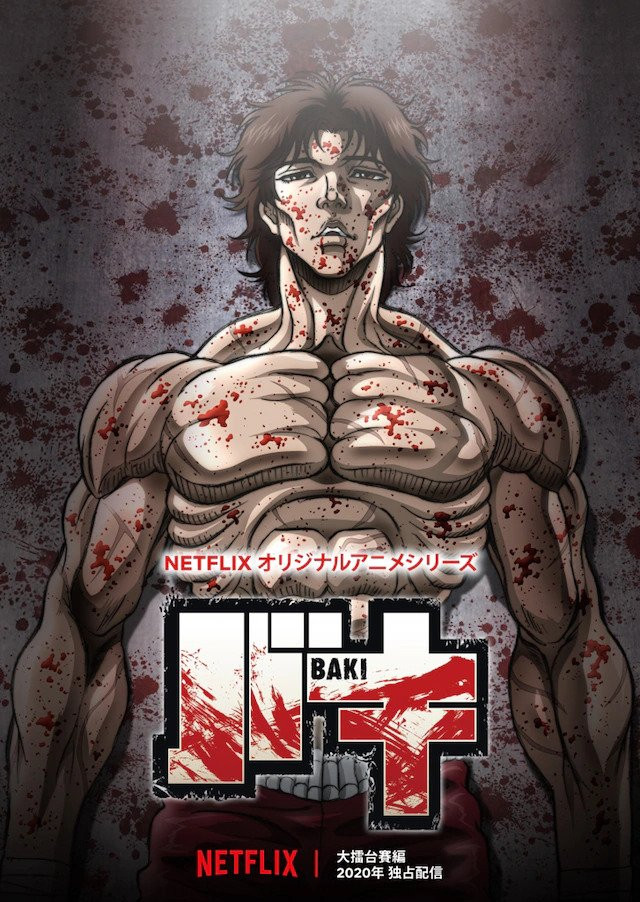
Via Comic Natalie
-------
Joseph Luster is the Games and Web editor at Otaku USA Magazine. You can read his webcomic, BIG DUMB FIGHTING IDIOTS at subhumanzoids. Follow him on Twitter @Moldilox.
Anime World Order Show # 185 - Closeup on His Eyeballs Getting Pushed Out From the Other Side of His Skull
Anime World Order Show # 184 - My Bare Chest Is A Bear Chest, So Your Argument Is Invalid
Crunchyroll Adds Phoenix Anime to Catalog
Crunchyroll Adds Thunderbolt Fantasy -Bewitching Melody of the West-
Crunchyroll came through with two more announcements today, with some wuxia puppet action joining the catalog ahead of the Winter 2020 lineup. Starting at 8:00pm Pacific Time, you'll be able to dive into the Thunderbolt Fantasy -Bewitching Melody of the West- movie. There's also a new addition to the Mr. Osomatsu fun, including all six versions of the Mr. Osomatsu THE MOVIE Prologues. Check out the details below.
Thunderbolt Fantasy -Bewitching Melody of the West-
Launch Time: December 24 at 8:00pm PT
Territories: North America, Central America, South America, Europe, Africa, Oceania, and the Middle East
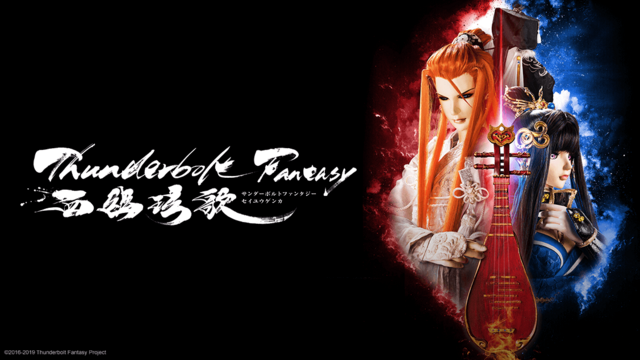
Synopsis:
Làng Wū Yáo is a boy born with a supernatural singing voice. Secluded in the snowy mountains, he is put through severe training by his blind mother. Her wish is for her son's voice to be unrivaled, so that it will be heard by the imperial court. But the intense training results in a tragic accident, where she dies.
Left an orphan as a result, Làng wanders the land. His voice is used as a tool by the wicked and greedy, with his heart being ground down in the process.
Eventually his strange singing catches the ear of the princess of Xī Yōu, and Làng is elevated to the stage his mother had dreamt of. But what awaits him is a life or death battle performance against other musicians for the amusement of the members of the court.
Until one day, Làng learns of the rumors of the Sword Plundering Nemesis, an infamous bandit known through all of Xī Yōu for stealing magical weapons. What he doesn't know is that the next weapon in the sights of this thief has been hidden by the emperor in the same castle Làng has been performing in.
Mr. Osomatsu THE MOVIE Prologues
Launch Time: Coming later tonight!
Territories: North America, Central America, South America, Europe, Africa, Oceania, and the Middle East
This includes all six versions of the prologues that played before the movie in theaters.
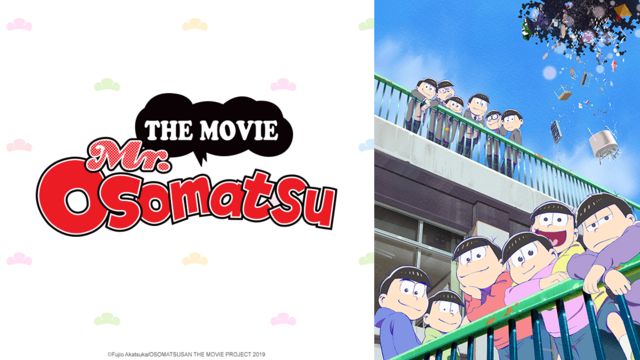
-------
Joseph Luster is the Games and Web editor at Otaku USA Magazine. You can read his webcomic, BIG DUMB FIGHTING IDIOTS at subhumanzoids. Follow him on Twitter @Moldilox.
